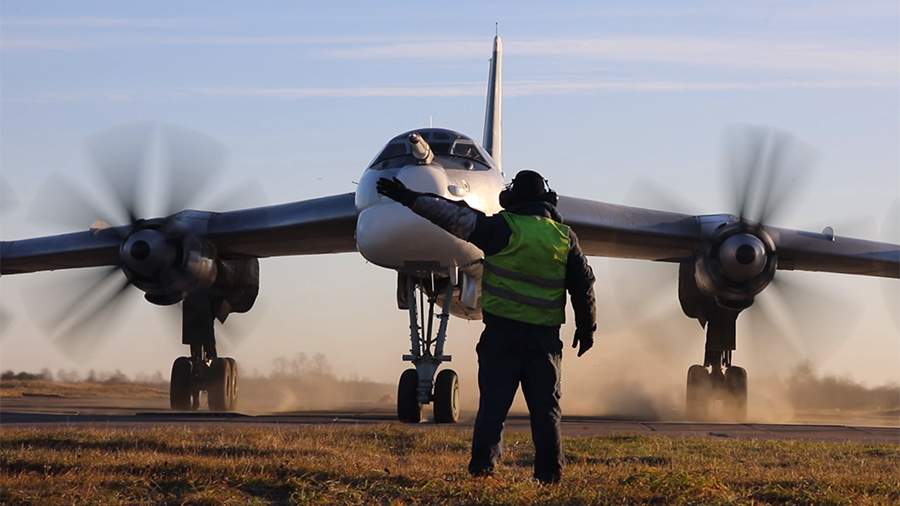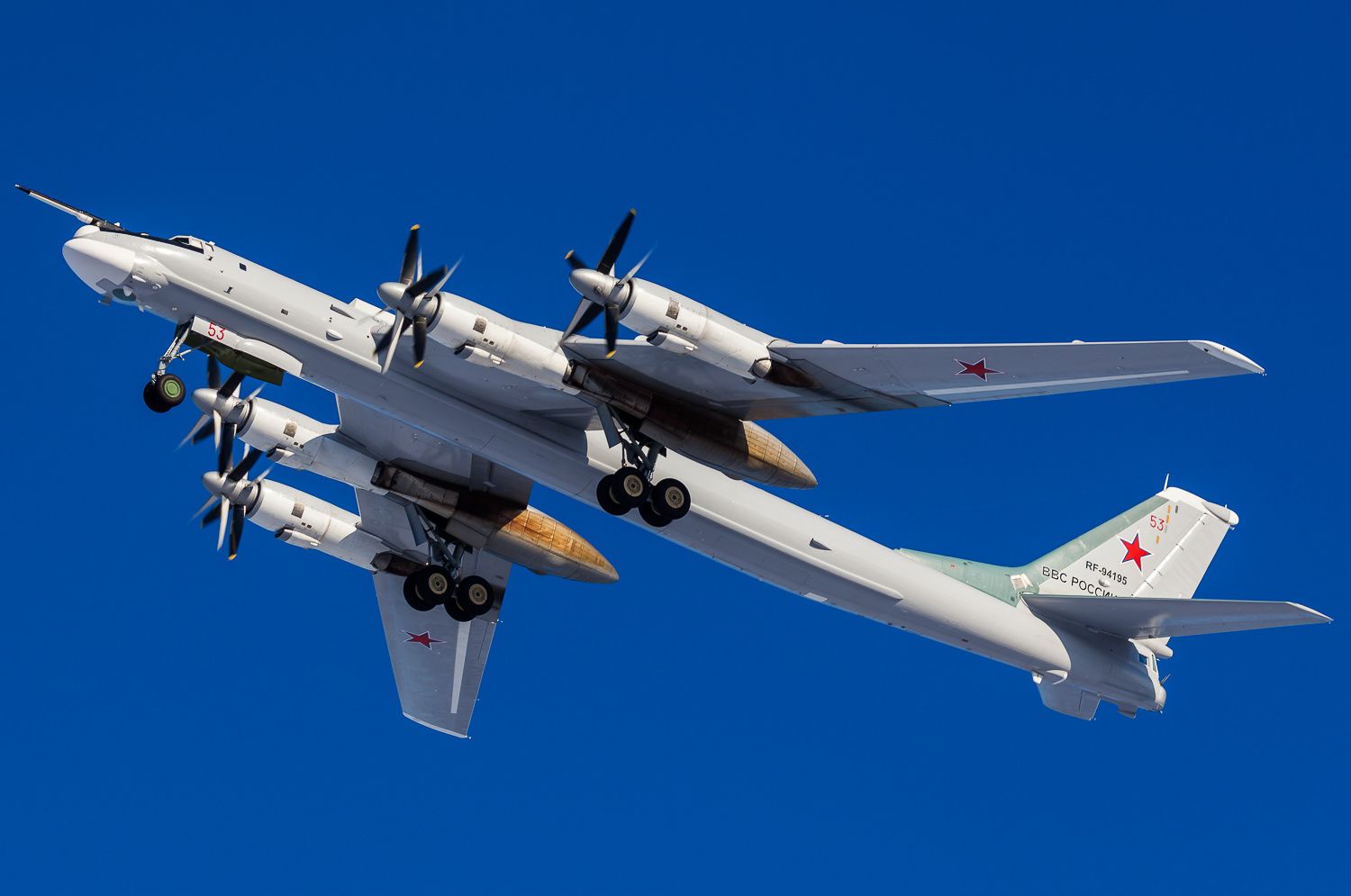On October 17, a pair of Russian Tu-95MS strategic bombers, escorted by Su-35 fighter jets, carried out a lengthy flight mission above the Sea of Japan, according to the Russian Ministry of Defense.
The Ministry said that two Tu-95MS strategic missile carriers from long-range aviation carried out a planned flight over the neutral waters of Japan.
The flight’s duration extended to approximately seven hours, with the bombers being accompanied by the crews of Russian Aerospace Forces’ Su-35S aircraft, the Ministry added.
Lieutenant-General Sergei Kobylash, the commander overseeing Russia’s Long-Range Aviation, stressed that the flight was fully compliant with the established international regulations governing airspace utilization.
Kobylash further pointed out that the long-range aviators routinely conduct flights over the expanse of neutral waters, encompassing the Arctic, the North Atlantic, the Black and Baltic Seas, and the vast stretches of the Pacific Ocean.
Russian Tu-95MS & Su-35 patrol over the Sea of Japan. The patrol reportedly lasted for 7 hours. pic.twitter.com/ult31rtOEE
— EurAsian Times (@THEEURASIATIMES) October 17, 2023
Despite being heavily involved in its war with Ukraine, Russia has persisted in its routine strategic bomber flights, using them as displays of military strength to its neighboring nations in the Far East.
In December 2022, Moscow executed a similar mission when two Russian Tu-95 strategic bombers undertook a seven-hour patrol flight over the Sea of Japan.
Additionally, on September 14, two Tu-95MS missile carriers embarked on a four-hour flight above the neutral waters of the Barents and Norwegian Seas. They were accompanied and protected by the Su-30SM aircraft from the Russian Aerospace Forces.
In July, Russian bombers executed a flight over the waters of the Bering Sea, situated off the west coast of Alaska. This extensive flight lasted over 13 hours, and the crews engaged in in-flight refueling exercises.

These activities have occurred amidst escalating tensions with Western nations due to Russia’s continued conflict in Ukraine and its assertive posture towards Ukraine’s Western allies.
Furthermore, while Moscow stated that the flight took place over international waters in the Sea of Japan, such flights have been a mounting cause for concern for Japan and South Korea.
Their apprehensions are rooted in the region’s increasing cooperation between the Chinese and Russian military.
Russia’s Tu-95MS Bomber
The Tu-95MS is the backbone of Russia’s strategic bomber force, representing an upgraded iteration of the original Tu-95 Bear strategic bomber.
The Tu-95MS variant has undergone significant modernization, replacing various parts, including defensive weapons and radar systems.
This extensive overhaul aimed to manufacture a new Tu-95 variant capable of launching longer-ranged air-to-surface cruise missiles.
Recognizing that the older Tu-95 airframes were ill-suited for modernization, production lines for the Tu-95 were restarted during the 1980s to manufacture the new Tu-95MS variants. Consequently, the currently operational aircraft are relatively young compared to some NATO aircraft.
The primary armament of the Tu-95MS consists of the Kh-55 air-launched cruise missile (ALCM), a subsonic missile boasting a range of approximately 2,500 km.

These aircraft are equipped with standoff cruise missiles and are deployed in combat missions, capable of engaging cruise missiles and strategic enemy targets.
The Tu-95MS strategic bomber features a high-aspect ratio spar wing design and an enhanced all-metal airframe. Its capabilities enable it to engage primary stationary enemy targets under extreme weather conditions, both day and night.
This aircraft measures 49.6 meters in length and 13.3 meters in height, with a semi-monocoque fuselage and a retractable tricycle landing gear consisting of a steerable twin-wheel nose unit and four-wheeled central units.
Its maximum take-off and landing weights are 185 tons and 135 tons, respectively, and it boasts a maximum payload capacity of 20,000 kilograms. The wings are swept back at an angle of 35 degrees, and the wingspan spans 50.05 meters.
In addition to the existing Tu-95MS model, Russia has initiated an upgrade program to enhance the Tu-95MS variant, resulting in the Tu-95MSM variant.
This new iteration has numerous improvements, with a particular focus on its missile-carrying capacity. It can carry eight to ten additional missiles under its reinforced wings.
Furthermore, some reports have suggested that this upgrade includes revised engines and propellers, providing the aircraft with enhanced flight performance.
Despite being introduced in the 1950s, the aircraft is expected to remain in operation until 2040, thanks to the upgrades provided by the MSM variant.
- Contact the author at ashishmichel(at)gmail.com
- Follow EurAsian Times on Google News




